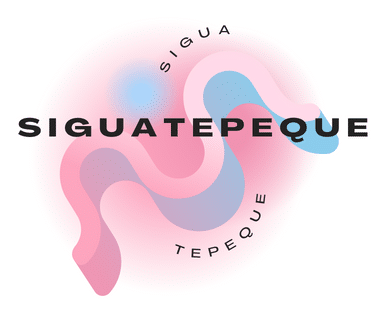What’s the Best Recovery Strategy for Rock Climbers after Intense Grip Training?

In the world of rock climbing, grip strength is essential. Your fingers and hands will bear the weight of your body as you ascend. Whether you are a seasoned pro or a beginner who is just getting to grips (pun intended) with the sport, training your grip is vital. But what happens after an intense training session? Your muscles are fatigued, your fingers feel like jelly, and your grip strength seems to evaporate. This is where recovery comes into play.
The Role of Recovery in Climbing
Recovery is a crucial aspect of training, particularly for rock climbers. Your muscles need time to heal and replenish their strength. If you don’t give them enough time, you risk injury and hinder your progress.
Additional reading : What’s the Role of Blockchain in Enhancing Transparency in Sports Transactions?
Recovery is not just about resting and doing nothing. It involves active participation from climbers, including eating a balanced diet, staying hydrated, and performing specific recovery exercises. This section will focus on the importance of recovery and how it affects the performance of climbers.
Recovery allows the body to repair damaged tissues, eliminate toxins like lactate from the blood, and replenish energy stores. Lactate is a byproduct of intense exercise that can cause muscle fatigue and reduce performance.
Also to discover : How Can Virtual Wind Tunnels Improve Performance in Downhill Skiing?
According to a report published on PubMed, a renowned scholar platform, insufficient recovery can lead to overtraining syndrome, a condition characterized by a decrease in performance, mood changes, and increased risk of injuries. As a climber, your grip strength is one of your most valuable assets, and overtraining can lead to grip strength impairments.
Strategies for Post Grip Training Recovery
Understanding the importance of recovery is only half the battle. The next step is knowing how to recover effectively. Let’s explore some of the best strategies for post-grip training recovery.
Active Recovery: One effective strategy is active recovery. This involves performing light exercises that promote blood flow to the muscles without causing additional strain. For rock climbers, this could mean doing light finger stretches or a gentle climb.
Nutrition: Proper nutrition plays a significant role in muscle recovery. Consuming high-quality protein shortly after a workout can stimulate muscle protein synthesis, which aids in the repair and growth of muscle tissue.
Hydration: Keeping hydrated is crucial for flushing toxins from the body and aiding in recovery. Water is vital for all bodily functions and becomes even more so during recovery.
Specific Exercises for Grip Strength Recovery
Now that we have touched on the general strategies for recovery, let’s delve deeper into the specific exercises that can aid in grip strength recovery.
Finger Stretches: Stretching can improve flexibility and blood flow to the muscles, aiding in recovery. Simple finger stretches can go a long way in relieving tension and promoting recovery.
Hand Therapies: There are a variety of therapy exercises and tools designed specifically for hand and grip strength recovery. These include hand therapy balls, grip strengtheners, and even some forms of yoga.
Light Climbs: Performing a light climb can be a form of active recovery, promoting blood flow to the hand and finger muscles without causing additional damage.
The Role of Rest in Recovery
Despite the importance of active recovery and nutrition, the role of rest should not be overlooked. Your body does most of its healing when you’re at rest.
During sleep, your body goes into overdrive repairing and rebuilding muscles that have been damaged during your workout. Also, hormones that aid in muscle growth and recovery, such as growth hormone, are released during sleep.
Rest also includes taking time off from training. While it may seem counterproductive, taking a rest day can actually improve your performance. This gives your body a chance to fully recover, so you can return to your training with renewed strength and vigor.
In Conclusion
Intense grip training is crucial for rock climbers, but without proper recovery, it could lead to overtraining and injury. By incorporating effective recovery strategies such as active recovery exercises, proper nutrition, hydration, and rest, you can ensure your grip strength continues to improve and you can climb to new heights.
Remember, effective recovery is just as important as the training itself. So, take the time to rest, refuel, and rejuvenate. Your climbing performance will thank you for it.
Don’t underestimate the power of rest and recovery. It may just be the missing puzzle piece in your climbing training regime.
Rehabilitation Exercises for Rock Climbers
Specific rehabilitation exercises can significantly aid in recovery, particularly after extensive grip training sessions. These exercises, often recommended by sports medicine professionals, are designed to help restore the hand and finger strength that is crucial for rock climbing.
For immediate relief post-climb, try passive recovery methods such as shaking out the hands and fingers. This simple action promotes blood flow, reduces blood lactate levels, and can provide short-term relief from fatigue. As per an article on PubMed, increasing blood flow to the muscles is a proven way to speed up the removal of lactate, a factor that can trigger muscle soreness and impede performance.
Hand and finger exercises such as squeezing a stress ball or rubber ring can also be beneficial. These exercises engage the muscles in a controlled way, helping to rebuild strength without causing additional strain.
For more extensive rehabilitation, consider consulting a physiotherapist or sports medicine professional. They can prescribe exercises tailored to your needs and monitor your progress. Always remember that any restoration program should be followed strictly and consistently to see significant improvements in grip strength.
Protective Measures to Avoid Overtraining
Overtraining is a common pitfall for rock climbers, especially those who do not adequately prioritize recovery. According to a journal article on sports physiology from Google Scholar, overtraining can result in a range of negative outcomes, from decreased performance to serious injuries.
To avoid overtraining, listen to your body. If you notice persistent fatigue, a decrease in performance, or nagging pains that won’t go away, these could be signs of overtraining.
In addition to active recovery and rehabilitation exercises, incorporate protective measures into your training routine. These can include warming up properly before climbing, wearing appropriate gear, and gradually increasing the intensity of your workouts rather than making sudden, drastic changes.
Also, consider cross-training. Engaging in other forms of exercise can improve overall fitness, reduce the risk of injury, and prevent the monotony that can lead to overtraining.
Wrapping Up
When it comes to rock climbing, the importance of grip strength cannot be overstated. But just like any other aspect of physical fitness, it requires a careful balance of training and recovery. As shown in this PMC free article, neglecting recovery can increase the risk of overtraining and decrease overall performance.
This article has provided practical strategies to aid recovery after intense grip training, including active recovery techniques, specific rehabilitation exercises, and protective measures to avoid overtraining.
While these strategies are effective, they are not a substitute for professional advice. If you’re serious about improving your climbing performance, consider consulting a sports medicine professional.
Remember, climbing is not just about the time you spend on the rock. What you do off the rock—how you recover, how you fuel your body, and how you protect against overtraining—is just as important.
Recovery is not a one-size-fits-all process. What works for one climber may not work for another. It is essential to find a recovery strategy that aligns with your body and your climbing goals. With a solid recovery plan in place, you can continue to push your limits, improve your performance, and ascend to greater heights in the world of rock climbing.
